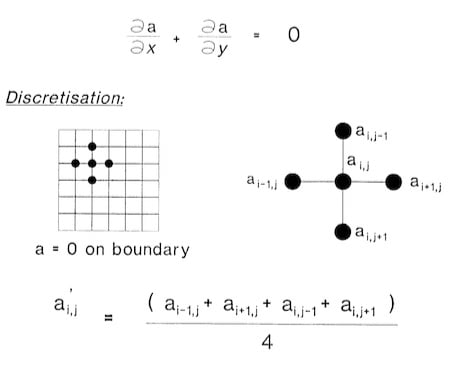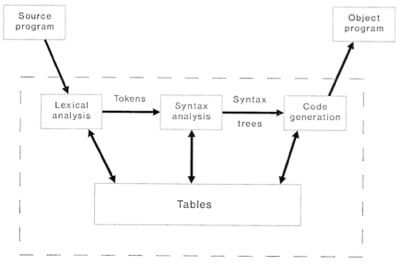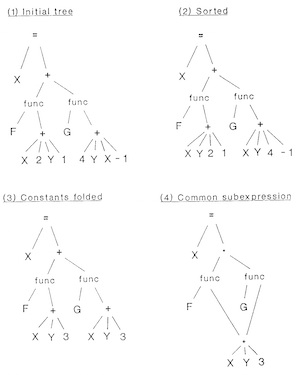
Minutes of the BCS Fortran Specialist Group Meeting
held at BCS HQ, 13 Mansfield Street, London
on 7 February 1991
Present: David Bailey Salford University
Stephen Brazier Oscar Faber Partnership
Robert Chafer Salford University
Peter Edwards CAD Centre Ltd
Miles Ellis Oxford University
Mike Geary NAG
E Golton RAL
Carol Hewlett LSE
Peter Holland SSL
David Holmes Rolls-Royce plc
M J Roth AEA Technology
Les Russell AWE
Lindsey Savage MCC
Nick Saville Private Consultant
Tony Webster Salford University
John Wilson Leicester University
John Young PE-MOD
1. APOLOGIES FOR ABSENCE
The Chairman, John Wilson, opened the meeting late with
apologies from himself and the Secretary, John Young, for their
late arrival due to the adverse weather conditions affecting
British Rail.
Apologies for absence were received from Chris Lazou, Brian
Meek, David Muxworthy, John Reid, Lawrie Schonfelder and Dave
Vallance who was due to introduce the afternoon session.
2. MINUTES OF THE LAST TWO MEETINGS
[The following points relate to the minutes of 25 October 1990.]
On page 4 the date of the talk on FORCHECK by Erik Kruyt
should have read 6 December 1990.
On page 3 several points should be corrected on the summary
in the Report from the X3J3 Representative. These corrections
will be included in the next minutes.
3. MATTERS ARISING
The paper on 'Dynamic Strings in ISO Fortran' by Lawrie
Schonfelder and J S Morgan was published recently in 'Software
Practice and Experience'.
Mike Ellis confirmed that nobody was interested in joining
DISC, the BSI initiative to create a group to formally approve
programming languages. Minor changes to the Report on DISC had
not improved the situation to any large extent.
It was noted that there had been no official move to
transfer this formal task to the BCS and that if it did happen
the Group would obviously be responsible for Fortran only.
4. REPORT ON X3J3 AND ISO ACTIVITIES
The ISO ballot on the Draft Fortran 90 Standard was nearly
completed. The UK vote had apparently gone missing but would be
YES, the US had also voted YES, but Japan had voted NO. The
Canadian vote had a long list of comments which were all
editorial changes.
The next WG5 meeting was in London in mid-March. At the end
of this meeting there should be a final agreement on the document
which would be ready for type-setting and the ISO bureaucracy.
The X3J3 Committee met just before Christmas with only about
half the members attending. The American public review had a
small response which generated a set of amendments. However, the
meeting accepted the Draft Standards with editorial changes
The next meeting of X3J3 was scheduled for early April in
Minneapolis but there were problems with travel. WG5 were likely
to "tell" X3J3 that the current Draft Standard is the final
document. However, there were minor technical problems to be
sorted out and a large number of editorial changes to be made.
Then the new International Standard for Fortran 90 should be
ready for publication.
As to the future, WG5 will possibly debate the way the next
Standard will be implemented. Current books on Fortran 90 are
likely not to contain the full standard. The full standard can
be obtained through the BSI when it is available. A short
discussion on various aspects of Fortran ensued.
There then followed a general discussion on the new
standard.
5. PROGRAMME
WG5/IST5 Reception at BSI
The meeting noted the item in the February Newsletter on the
21st Birthday Celebrations proposed by Brian Meek. The meeting
endorsed the idea of FSG members joining in the WG5-IST/5
Reception on Tuesday, 19 March, 1991. Following discussion of
the event and the finances of the Group it was agreed that up to
£100 would be donated towards the costs of the Reception. John
Wilson was to contact Brian Meek about this event.
Annual General Meeting
The Annual General Meeting would take place on Thursday, 16
May, 1991 at 2 pm. (There will be normal business in the
morning). This will be followed by a report and a debate on
Fortran 90. The Secretary was asked to include a nomination form
for the 1991/92 Committee in the next mailing.
Proposed visit to Jodrell Bank
The provisional date for this meeting is Thursday, 5
September 1991.
November Meeting
The last meeting of 1991 will be on Thursday, 28 November,
probably at BCS in London. Mike Nunn has offered to organise a
buffet lunch if there are sufficient members interested.
6. ANY OTHER BUSINESS
Cutback of printing services at BCS
The Chairman, John Wilson, had received a letter from the
BCS Services Director, Tim Hackworth, detailing staff cutbacks
at BCS. The main item affecting the Group is the curtailment of
in-house printing which means that urgent mailings would no
longer be possible.
BISL Conference Organisation
The Chairman had received information from the British
Informatics Society Ltd (BISL), the commercial "arm" of the BCS,
about arranging conferences for Specialist Groups.
BCS Distinguished and Honorary Fellowships and BCS Medals
John Wilson had received details and a form for nominating
people for Distinguished and Honorary Fellowships, and Medals.
The closing date for recommendations is Friday, 31 May, 1991.
Committee for 1991/92
The Chairman, John Wilson, confirmed that he would be
standing down at the AGM. The Secretary, John Young, said he
would stand down if somebody would like to take over this year
but would have to stand down next year. There followed a
discussion on the role of the Secretary. It was suggested that
the job could possibly be split into Secretary and Minute
Secretary.
7. WORKSHOP ON COMPILERS FOR FORTRAN
The afternoon session was to be introduced by Dave Vallance
of Salford Software Marketing Ltd. Dave was unable to attend the
meeting but his colleagues David Bailey, Tony Webster and Robert
Chafer were able to come. Tony Webster introduced the subject
of 'Compilers for Fortran' and then talked on aspects of Fortran
90 compilers (see Appendix A1). David Bailey then talked on
compilers in general and the Salford FTN77 in particular (see
John Young, Secretary
21 March 1991
FORTRAN 90 - IMPLEMENTATION ISSUES
BY
TONY WEBSTER
slide 1
----------------------------------------------------------------------------------------------------
FORTRAN 90 - implementation issues
slide 2
----------------------------------------------------------------------------------------------------
Key differences from FORTRAN 77
slide 3
----------------------------------------------------------------------------------------------------
Dynamic storage
C = CFUNC(C1//'ABC')
where C1 is CHARACTER*(*)
slide 4
----------------------------------------------------------------------------------------------------
Derived types
TYPE ARRAYS
REAL, DlMENSlON(10,10) :: A
REAL, DlMENS|ON(20) :: B
END TYPE ARRAYS
TYPE(ARRAYS), DlMENSlON(10,20) :: ARR
Then
ARR( : , 15 )
is a vector with 10 elements of type ARRAYS,
with a stride of 120 real storage units
slide 5
----------------------------------------------------------------------------------------------------
Example
Discrete solution of Laplace's equation

slide 6
----------------------------------------------------------------------------------------------------
FORTRAN 90:
A = (EOSHIFT(A,1,DIM=1) + EOSHIFT(A,-1,DIM=1)
+ EOSHIFT(A,1,DIM=2) + EOSHIFT(A,-1,DIM=2)
FORTRAN 77:
REAL A(0:N+1,0:N+1), TEMP(N), T
DO 10 J = 1,N
TEMP(J) = A(0,J)
10 CONTINUE
DO 20 I = 1,N
DO 30 J = 1,N
T = A(I,J)
A(I,J) = ( TEMP(J) + A(I,J-1) + A(I,J+1) + A(I+1,J) ) / 4
TEMP(J) = T
30 CONTINUE
20 CONTINUE
slide 7
----------------------------------------------------------------------------------------------------
Modules
slide 8
----------------------------------------------------------------------------------------------------
The forward reference problem
MODULE MOD
CONTAINS
SUBROUTINE A
. . .
CALL B (X = 1.23 )
Y = SlN( 0.456 )
. . .
END SUBROUTINE A
SUBROUTINE B(X,Y)
REAL :: X
REAL, OPTIONAL Y
END SUBROUTINE B
END MODULE MOD
slide 9
----------------------------------------------------------------------------------------------------
Generic names (1)
The non-module case:
INTERFACE MAX
INTEGER FUNCTION INT_MAX(I, J)
INTEGER, INTENT(IN) :: I, J
END FUNCTION INT_MAX
REAL FUNCTION REAL_MAXIX, Y)
REAL, INTENT(IN) :: X, Y
END FUNCTION REAL_MAX
END INTERFACE
slide 10
----------------------------------------------------------------------------------------------------
Generic names (2)
Module case - another forward reference example:
MODULE MOD
INTERFACE MAX
MODULE PROCEDURE INT_MAX, REAL_MAX
END INTERFACE
CONTAINS
. . .
INTEGER FUNCTION INT_MAX(I, J)
INTEGER, INTENT(IN) :: I, J
END FUNCTION INT_MAX
INTEGER FUNCTION REAL_MAX(X,
REAL, INTENT(IN) :: X, Y
END FUNCTION REAL_MAX
END MODULE MOD
slide 11
----------------------------------------------------------------------------------------------------
Generic names (3)
The old version (S8.104):
INTERFACE
INTEGER FUNCTION MAX(I, J)
INTEGER, INTENT(IN) :: I, J
END INTERFACE
INTERFACE
REAL FUNCTION MAX(X, Y)
REAL, INTENT(IN) :: X, Y
END INTERFACE
slide 12
----------------------------------------------------------------------------------------------------
Kurt's paradox
Optionality of arguments to certain intrinsics controls rank of result
- cannot generate code till run-time
SUBROUTINE SUB1(DIM)
INTEGER, OPTIONAL :: DIM
INTEGER A(100,100), B(2)
INTERFACE OPERATOR(.XX.)
FUNCTION F1(ARG1, ARG2)
INTEGER ARG1, ARG2, F1
END FUNCTION F1
FUNCTION F2(ARG1, ARG2)
INTEGER ARG1(:), ARG2, F2(2)
END FUNCTION F2
END INTERFACE
B = LBOUND(A, DIM) * 10
B = LBOUND(A, DIM) .XX. 99
slide 13
----------------------------------------------------------------------------------------------------
Performance
Will you pay a penalty for using a FORTRAN 90 compiler to compile FORTRAN 77?
But you may pay a penalty for starting to exploit FORTRAN 90 syntax - e.g. assumed
shape arrays
slide 14
----------------------------------------------------------------------------------------------------
Other areas
lntrinsics
No particular difficulties, but many of them
l/O
Some new concepts (e.g. non- advancing l/O)
No real problems on modern O/S
Control structures
New syntactic variety, but no real problems
slide 15
----------------------------------------------------------------------------------------------------
Run-time checking
slide 16
----------------------------------------------------------------------------------------------------
Implementation effort
The problems are not in the individual features but in interactions and the sheer volume.
Estimates by several well-known implementors range from 10 man-years to 30 man-years
(DEC ADA took 25 man-years)
Will compilers be expensive as a result?
slide 17
----------------------------------------------------------------------------------------------------
COMPILERS FOR FORTRAN
THE SALFORD FTN77
BY
DAVID BAILEY
slide 1
----------------------------------------------------------------------------------------------------
Salford FTN77 (1)
Philosophy:
slide 2
----------------------------------------------------------------------------------------------------
Salford FTN77 (2)
FTN77 implementations (in chronological order):
ICL 1900 series
Prime 50-series
MS-DOS 886/486
UNIX 386/486
slide 3
----------------------------------------------------------------------------------------------------
Structure of a compiler

slide 4
----------------------------------------------------------------------------------------------------
Lexical analysis (1)
FORTRAN 77 -
e.g. - the Mariner example:
DO 56 I = 1 , 20 - DO loop
DO 56 l = 1 . 20 - assignment
slide 5
----------------------------------------------------------------------------------------------------
Lexical analysis (2)
The FTN77 approach -
- Comma at level 0 w.r.t. brackets & quotes
See previous example
- Equals "=" at level 0 w.r.t. brackets & quotes
Assumed to be assignment
- Letter at zero level following right bracket
To distinguish between:
lF(...)J=2 logical IF statement
lF(...)=2 array element assignment
slide 6
----------------------------------------------------------------------------------------------------
Parsing
Operator precedence used for expressions, everything else done ad-hoc
FTN77 creates n-ary trees - nodes are then sorted
Common subexpressions give directed graphs rather than trees
slide 7
----------------------------------------------------------------------------------------------------
Parsing - example
X= F(X+2+Y+1) + G(4+Y+X-1)

slide 8
----------------------------------------------------------------------------------------------------
Forward references
Routine calls fixed up by linker
References to labels
slide 9
----------------------------------------------------------------------------------------------------
Code generation
slide 10
----------------------------------------------------------------------------------------------------
Checking options (1)
FORTRAN 77 has a reputation as an uncheckable language - but it is possible to check almost
everything!
slide 11
----------------------------------------------------------------------------------------------------
Checking options (2)
Other checks include:
These options find bugs in most programs (even the FIPS validation suite)
Work is proceeding for other languages to extend these techniques to pointers
slide 12
----------------------------------------------------------------------------------------------------
Porting (1)
Features to help with porting FORTRAN 66 codes, both to let it run as-is and to fix it:
slide 13
----------------------------------------------------------------------------------------------------
Porting (2)
Many popular extensions to allow non-standard code to run unmodified
slide 14
----------------------------------------------------------------------------------------------------
Optimisation (1)
Tree-level optimisation:
Concentrate on loops
"Candidate expressions" - either independent of, or linear in, the loop variable (loop
invariants and induction expressions)
DO 10 l = 1,N I1 = J+K
A(l) = J+K => |2 = -5
B(l) = 2*l - 7 DO 10 l = 1,N
10 CONTINUE A(l) = l1
B(l) = l2
|2 = |2+2
10 CONTINUE
slide 15
----------------------------------------------------------------------------------------------------
Optimisation (2)
"Peep-hole" optimisation:
slide 16
----------------------------------------------------------------------------------------------------
Target architecture
Approach is modified by the intended target machine
slide 17
----------------------------------------------------------------------------------------------------
Other activities
slide 18
----------------------------------------------------------------------------------------------------